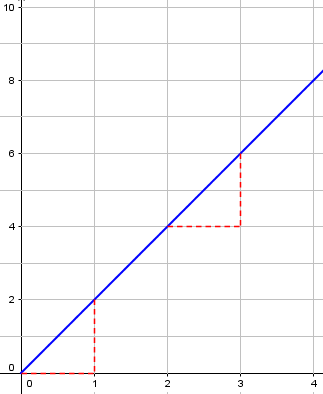


Space the tick marks and their labels to describe the data in sufficient detail for your purposes.If median age continues to increase and exceeds 50 in future years, a future graph will have to extend the scale on the y-axis to 60 years. For example, the largest y-value in Figure 4.3 is 49 years in 1997, so the scale on the y-axis goes up to 50. Determine the range of values you need to show on the y-axis by identifying the largest value you need to graph on the y-axis and rounding that figure off to a slightly larger number.While this recommendation is not followed in all fields, it is the standard practice in epidemiology. Make the length of the y-axis shorter than the x-axis so that your graph is horizontal or “landscape.” A 5:3 ratio is often recommended for the length of the x-axis to y-axis.The following steps are recommended for creating a scale for the y-axis. You might prefer to plot these data by week, month, quarter, or even year, depending on the point you wish to make. Consider, however, if you had line-listed data with the actual dates of onset or report that spanned several years. For example, if you use the data in Table 4.14 to graph the number of cases of measles cases by year from 1990 to 2002, then the scale of the x-axis will most likely be year of report, because that is how the data are available. The scale should reflect both the data and the point of the graph. When you create an arithmetic-scale line graph, you need to select a scale for the x- and y-axes. For example, Figure 4.2 shows prevalence (of neural tube defects) per 100,000 births. Thus, these graphs are primarily used to portray an overall trend over time, rather than an analysis of particular observations (single data points). Generally, the x-axis for these graphs is used to portray the time period of data occurrence, collection, or reporting (e.g., days, weeks, months, or years). Thus an arithmetic-scale line graph is one in which equal distances along either the x- or y- axis portray equal values.Īrithmetic-scale line graphs can display numbers, rates, proportions, or other quantitative measures on the y-axis. This represents an example of a discrete variable. In Figure 4.2, for example, the space between tick marks along the y-axis (vertical axis) represents an increase of 10,000 (10 × 1,000) cases anywhere along the axis - a continuous variable.įurthermore, the distance between any two tick marks on the x-axis (horizontal axis) represents a period of time of one year. In an arithmetic-scale line graph, a set distance along any axis represents the same quantity anywhere on that axis. It is the method of choice for plotting rates over time.
#DESCRIBE TREND IN GRAPH EXPONENTIAL GROWTH SERIES#
In epidemiology, this type of graph is used to show long series of data and to compare several series. 54) Arithmetic-scale line graphsĪn arithmetic-scale line graph (such as Figure 4.1) shows patterns or trends over some variable, often time.

Summary of notifiable diseases–United States, 2003. 53)Ĭenters for Disease Control and Prevention. Summary of notifiable diseases–United States, 2002. 54).Ĭenters for Disease Control and Prevention. Summary of notifiable diseases–United States, 1989. Each axis should be labeled to show what it represents (both the name of the variable and the units in which it is measured) and marked by a scale of measurement along the line.ĭata Sources: Centers for Disease Control and Prevention. The vertical axis is the y-axis and shows the dependent (or y) variable, which, in epidemiology, is usually a frequency measure such as number of cases or rate of disease. The horizontal axis is known as the x-axis and generally shows values of the independent (or x) variable, such as time or age group. In epidemiology, most graphs have two scales or axes, one horizontal and one vertical, that intersect at a right angle.


 0 kommentar(er)
0 kommentar(er)
